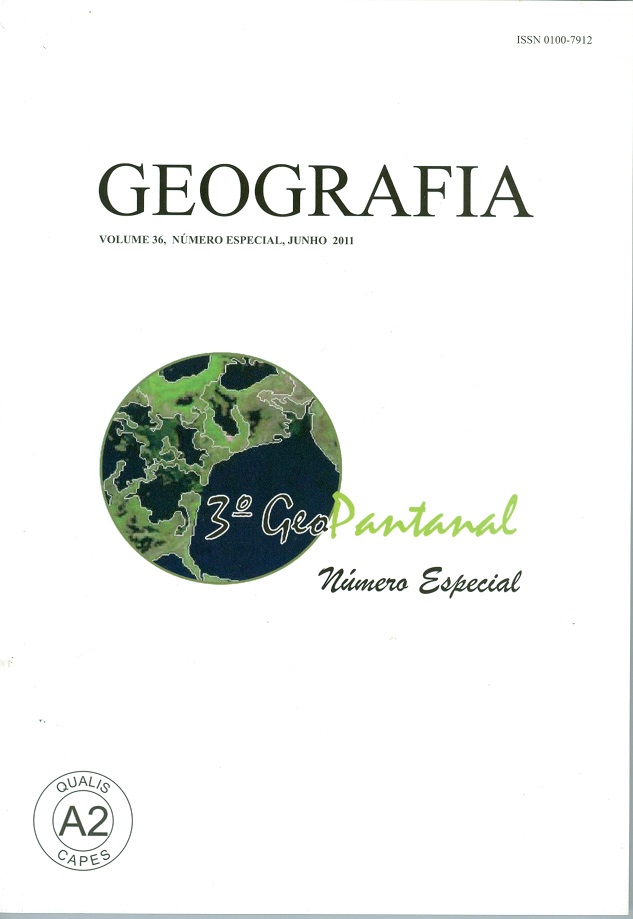SPECTRAL RESPONSE OF vegetatION COVERED SURFACE SUBJECT TO FLOODING DUE TO VIEWING GEOMETRY
Resumo
The objective of this research was to study the bidirectional reflectance of a natural surface with different levels of flooding due to different viewing angles, since the multi-angle imaging for orbital sensors requires special attention at the analysis of the Pantanal. Measurements were made at the Laboratory for Radiometry at INPE using a portable spectro-radiometer FieldSpecÒ 3. The results of the bidirectional reflectance analysis in band (first four bands and the panchromatic bands of sensor CCD sensor aboard the CBERS satellite) of grass samples at different levels of flooding, presented anisotropic behavior with a preferential zenith direction of 30º in azimuth of 0º for vegetated areas, of 45º in azimuth of 45º for wetlands, of 30º in azimuth of 90º for areas in process of flooding and of 45º in azimuth of 90º for inundated areas. This anisotropic behavior was observed in band reflectance of the surface estimated from the MODIS/TERRA (measured in nadir and in several lateral satellite viewing angles) for the first seven bands in the scene involving pasture and flooded pasture in the region of Nhecolândia. There was a strong anisotropy in the region of grasslands and low anisotropy for areas with flooded pastures. Key words: Bidirectional reflectance. Wetland. Anisotropy. Resposta espectral de superfície vegetada sujeita a inundação em razão da geometria de visada O objetivo desta pesquisa foi estudar o fator de reflectância bidirecional de uma superfície natural (amostra de grama “Batatais” sem e com diferentes níveis de inundação) em função de diferentes ângulos de visada. As medições foram feitas no Laboratório de Radiometria do INPE utilizando um espectrorradiômetro portátil FieldSpecÒ 3. Analisando os dados do fator de reflectância bidirecional in-band (bandas 1 a 4 e pancromática do sensor CCD do satélite CBERS), plotados em coordenadas polares, observa-se que a amostra de grama e diferentes níveis de inundação possuem um comportamento anisotrópico. Os resultados indicam que em todos os experimentos foram encontrados comportamentos anisotrópicos, com direção preferencial de 30º zenital no plano azimutal de 0º para superfícies vegetadas, de 45º no plano azimutal de 45º para as áreas úmidas, de 30º no plano azimutal de 90º para as áreas de enchente e de 45º no plano azimutal de 90º para as áreas de cheia. Palavras-chave: Fator de reflectância bidirecional. Inundação. Anisotropia.Downloads
Publicado
Edição
Seção
Licença
Os autores mantém os direitos autorais e concedem à GEOGRAFIA o direito de primeira publicação, com os artigos simultaneamente licenciados sob a Licença Creative Commons BY 4.0, que permite o compartilhar e adaptar os artigos para qualquer fim, desde que sejam dados os créditos apropriados e as disposições dos direitos de imagem, de privacidade ou direitos morais. Outras atribuições legais podem ser acessadas em: https://creativecommons.org/licenses/by/4.0/legalcode.en.
Geografia, Rio Claro, SP, Brasil - eISSN 1983-8700 está licenciada sob a Licença Creative Commons BY 4.0





